St Mary the Virgin Anglican Church
Market St, Burra
B 1905 J.E. Dodd; enl 1965 & res 1971 J.E. Dodd Sons Gunstar Organ Works.
2m, 11spst, 4c, tr. Gt: 8.8.4.2.1-1/3. Sw: 8.8.4.2.8. Ped: 16.
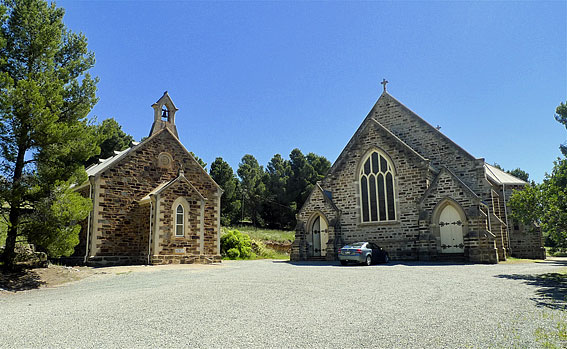

From
the 2009 OHTA Conference Book,
David Shield writes:
The
township of Burra is an amalgamation of several smaller settlements clustered
around the copper mines of the district.
Most prominent of the towns was Kooringa; followed by Redruth, Alma
Aberdeen and Llwchwr.1
All denominations were represented, reflecting the background of the
miners and settlers alike. The
first Church of England was opened for Divine Worship in 1848. The current building dates from
1879. The organ came in 1905.
A
shepherd named Thomas Pickett had found copper in the Burra Burra Creek in
1845. This led to a number of
settlements in the district. The
township of Burra was only proclaimed on 19 September 1940 and resulted from the
amalgamation of several mining towns.
During the 19th century it was better known as Kooringa, a mining town
of the SA Mining Association laid out in 1846.2 Situated near the copper mine, cottages
were constructed for miners and their families. Because the company didn’t grant freehold titles until the
1870s, other townships, Redruth Aberdeen and Graham, after J.B. Graham a major
shareholder of the Burra Mine, developed adjacent to the northern boundary of
the company’s property. The
Australian Copper Company laid out the village of Llwchwr in 1855, with Welsh
street names to house their Welsh smeltermen.3
The
original church of St Mary’s was located at the junction of Ware and Church
Streets in 1849. The South
Australian Mining Company donated the current church site. The present St Mary’s Anglican Church
was completed in 1879 (two years after the mine’s closure) at a cost of £4,000. It was built by the local firm of Sara
& Dunstan to the design by G.F. McLagan, who came to live in Kooringa from
Melbourne. The Gothic-style church
now contains many memorials to Burra’s long-established families and [many]
stained glass memorial windows, two of which are from the original St Mary’s
Church.4
At
he opening of the church, an early
connection was made with St Peter’s Cathedral. At the ceremony for the laying of the foundation stone on 3 July
1879, Arthur Boult, organist of the Cathedral, and his choristers travelled to
Burra to participate. This
connection was to reappear in the 1960s.
The
organ was dedicated on 22 December 1905 and cost £350. As he had done elsewhere, Dodd arranged
for the recitalist on the occasion: his choice was Dr E. Harold Davies.
The
organ has played a prominent part in the services of the church. The dedication of several memorial
windows has drawn large numbers, 400 being present on one occasion in March
1922. Church services were
broadcast from St Mary’s on at least two occasions. Records note services broadcast on 5 November 1939 over 5CL and
5CK and again 13 years later on 21 September 1952 over 5AN and 5CK. With
the additions of 1964, J.V. Peters gave a recital to celebrate and demonstrate
the organ. The church was packed
on a sweltering night in November 1966 for the presentation of The Messiah with Peters at the organ and severe thunderstorms
disrupted the advent carols a fortnight later, with P. Shillabeer at the
organ. Peters returned in April the following
year to play for the Choral Eucharist welcoming the Lord Bishop of Willochra,
the Rt Revd T.E. Jones.5
J.E. Dodd 1905
enlarged 1964 & restored 1971 J.E. Dodd
& Sons Gunstar Organ Works
2 manuals, 11 speaking stops, mechanical action
|
GREAT ORGAN |
|
|
|
Open |
8 |
|
|
Claribel |
8 |
|
|
Principal |
4 |
|
|
Fifteenth |
2 |
added 1964 |
|
Larigot |
1-1/3 |
1971: previously
Dulciana 8 |
|
Swell to Great Sub |
|
|
|
Swell to Great |
|
|
|
|
|
|
|
SWELL ORGAN |
|
|
|
Hohl Flute |
8 |
|
|
Viol d’Orchestre |
8 |
gvd.bass |
|
Flauto Traverso |
4 |
|
|
Flautina |
2 |
added 1964 |
|
Oboe |
8 |
|
|
Tremulant (by trigger
pedal) |
|
|
|
|
|
|
|
PEDAL ORGAN |
|
|
|
Bourdon |
16 |
|
|
Great to Pedal |
|
|
|
Swell to Pedal |
|
|
compass: 56/30
attached drawstop console
balanced swell pedal
two combination pedals
_________________________________________________________________________
1 See Manning, G.H., Place
Names of South Australia (1990): Kooringa - p.172, Burra - p.58, Llwchwr
- p.183, Graham - p.133, Alma - p.9
2 Register, 28 November 1846, p. 4.3
3 Manning, op cit.
4 This history is taken
directly from the summary record for St Mary’s Anglican Church (Burra, SA):
State Library of South Australia SRG 94/W21, online catalogue. See also: Devenport, J., St. Mary's
Church, Burra - the first 150 years
(Burra, SA: The Anglican Parish of Burra, 1997)
5
Reed, R.R (comp.), St Mary’s Burra
Vestry Record Glimpses Centenary Supplement (1979)
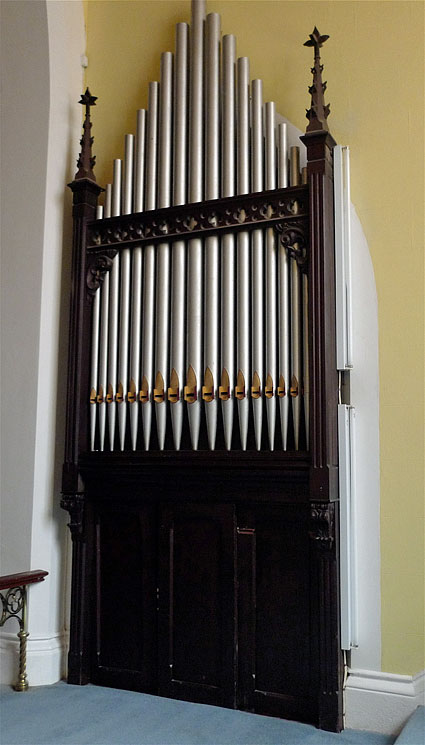 |
 Tomasz Nowak playing a recital |
|
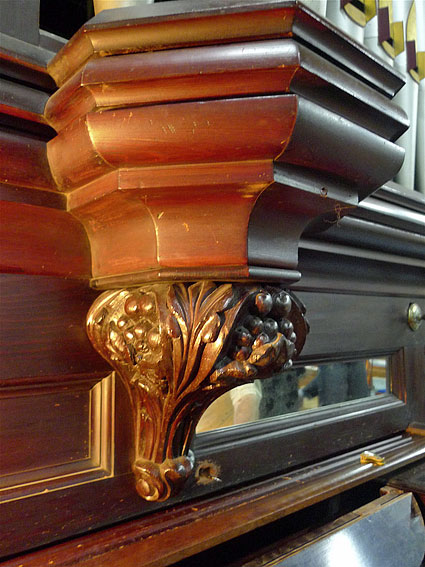 |
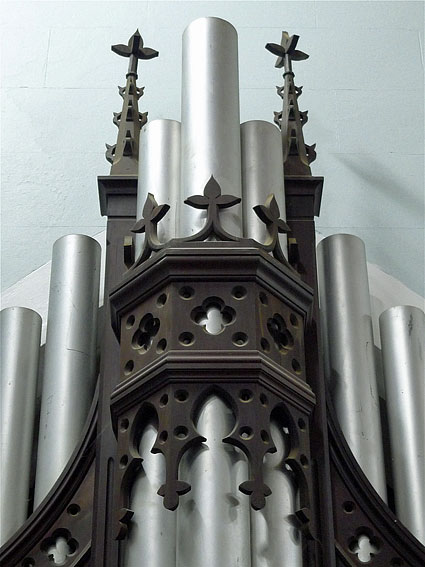 |
|
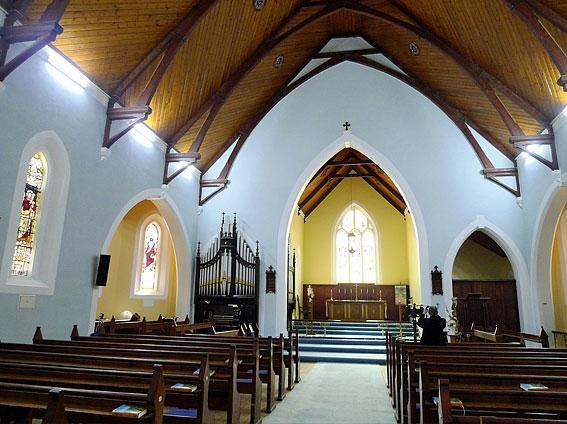
|
||
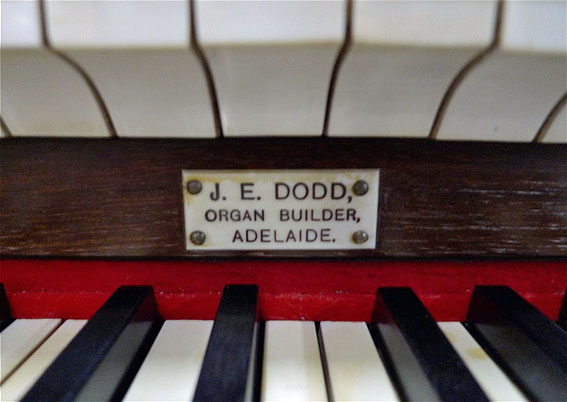
|
||
 |
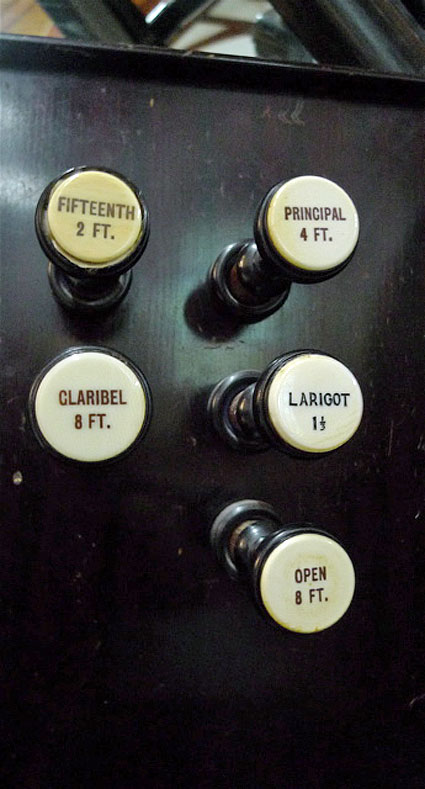 |
|

|
||
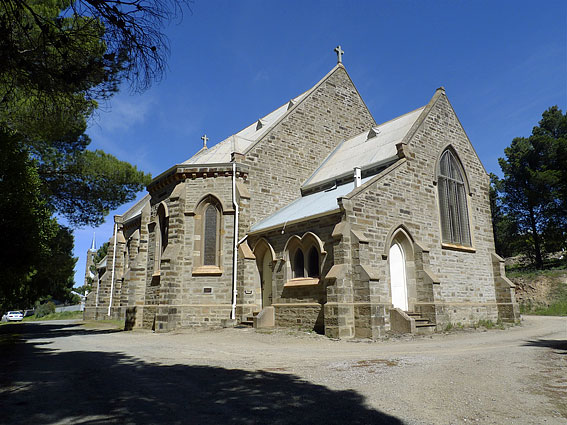
|
||
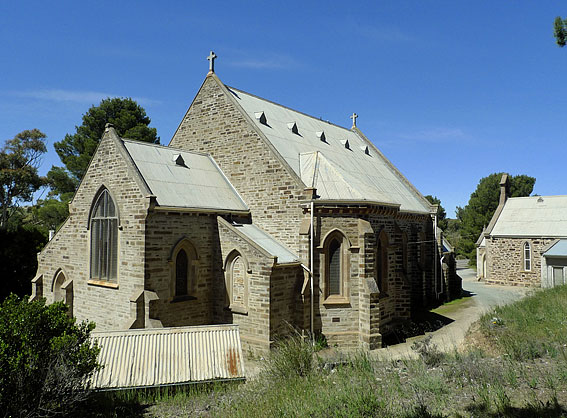
|
||
Photos: Trevor Bunning (Oct 2009)